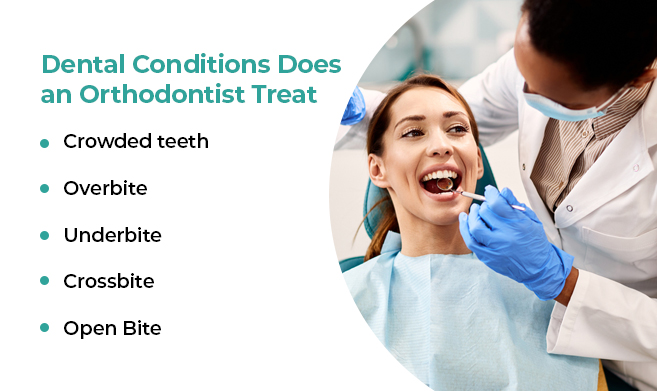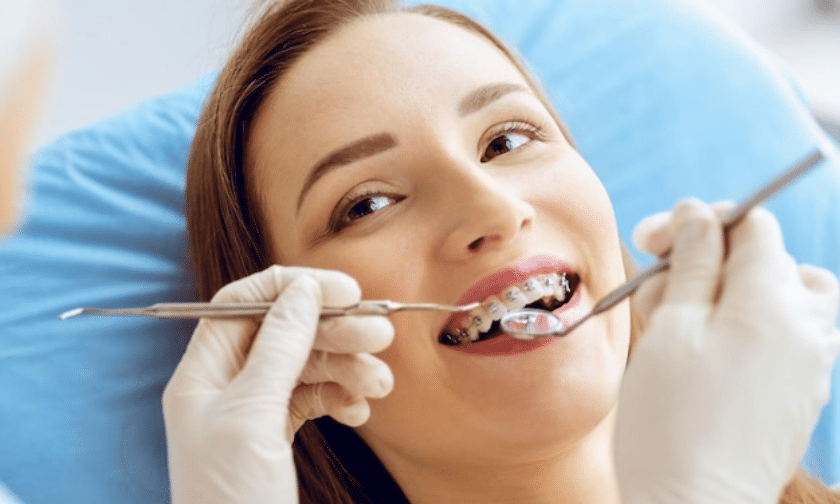All about Legacy Orthodontics
An orthodontist is a dental practitioner trained to detect, prevent, and treat teeth and jaw abnormalities. Orthodontists function with individuals of all ages, from children to adults.
Malocclusion, or misaligned teeth, can bring about dental concerns, consisting of tooth degeneration, gum tissue disease, and difficult or painful chewing. Not everyone is born with straight teeth. If you have a bad bite or huge spaces between your teeth, you might wish to seek advice from a dental professional concentrating on orthodontic care.
The Definitive Guide for Legacy Orthodontics
( Image Credit Scores: DigitalVision/Getty Images) Orthodontists use dealt with and detachable dental tools, like dental braces, retainers, and bands, to transform the placement of teeth in your mouth. Orthodontic therapy is for dental abnormalities, including: Misaligned teethBite problems, like an overbite or an underbiteCrowded teeth or teeth that are too far apartJaw misalignmentThe objective of orthodontic treatment is to improve your bite.
While you could assume of orthodontists as mainly for youngsters or teenagers who require dental braces, they can remedy oral problems at any kind of age. Orthodontists participate in university, oral college, and orthodontic institution.
, but not all dental practitioners are orthodontists. They focus on two areas: Exactly how to correctly and securely relocate teeth How to appropriately direct development in the teeth, jaw, and faceOnce an orthodontist has actually finished training, they have the option to end up being board licensed.
The Definitive Guide for Legacy Orthodontics
Imbalance, or malocclusion, is the most usual factor individuals see an orthodontist. It is hereditary and is the result of dimension distinctions between the upper and lower jaw or between the jaw and teeth. Malocclusion brings about tooth congestion, a misshapen jaw, or irregular bite patterns. Malocclusion is usually treated with: Your orthodontist attaches steel, ceramic, or plastic square bonds to your teeth.
If you have just small malocclusion, you might be able to make use of clear dental braces, called aligners, as opposed to traditional braces (https://www.awwwards.com/legacyortho/). Some people require a headgear to help move teeth into line with pressure from outside the mouth. After braces or aligners, you'll need to put on a retainer. A retainer is a custom tool that maintains your teeth in place.
They're frequently made use of on kids. They can create added room in the mouth without having to draw teeth. If you have a severe underbite or overbite, you may need orthognathic surgical treatment (additionally called orthodontic surgery) to lengthen or reduce your jaw. Orthodontists make use of wires, surgical screws, or plates to sustain your jaw bone.
You might need to see an orthodontist if you have: Crowding or not enough room for all of your teethOverbite, when your top teeth come your base teethUnderbite, when your base teeth are too far forwardSpacing or problems with gapsCrossbite, which is when your upper teeth fit behind your base teeth when your mouth is closedOpen bite or a vertical void in between your front base and upper teethMisplaced midline, when the center of your base and top teeth don't align Remedying a dental malocclusion can: Make attacking, eating, and talking easierImprove the symmetry of our face and your total appearanceEase pain from temporomandibular joint conditionsSeparate your teeth and make them simpler to clean up, aiding stop dental caries or cavities It's often a dental practitioner that initially notices misaligned teeth throughout a routine test.
5 Easy Facts About Legacy Orthodontics Explained

Throughout your first orthodontic appointment, you'll likely have: An oral examPhotos taken of your face and smileDental X-raysPanoramic (360 level) X-rays of your face and headImpressions to create link mold and mildews of your teethThese tests will help your orthodontist understand just how to wage your therapy. invisalign. An orthodontist is a dental professional that's had training to treat your teeth and jaw
Orthodontists might do surgical procedure, exams,X-rays,and even more to help you achieve a more comfy, healthier smile. An orthodontist is focused on your bite, so something like a broken tooth would be managed by a dental expert. Orthodontists are dentists yet not all dental practitioners are orthodontists. Orthodontists are concentrated on your bite, or the method your teeth meshed, and the straightness of your teeth.
Ever asked yourself just how celebrities always appear to have flawlessly lined up teeth? The answer usually hinges on the experienced hands of an orthodontist. Yet just what does an orthodontist do? Orthodontists are dental professionals who concentrate on dealing with irregularities in the teeth and jaws. Their know-how surpasses just developing an attractive smile; it includes enhancing your general dental wellness and feature.
The Single Strategy To Use For Legacy Orthodontics

While dental braces are the most frequently acknowledged orthodontic treatment, orthodontists have a varied toolkit at their disposal. The details strategy chosen depends upon the intensity of the situation, the patient's age, and specific choices. These tried-and-true dental braces use a system of brackets adhered to the teeth and connected by wires.
Clear aligners, like Invisalign, are a preferred option for clients looking for an extra discreet treatment choice. These removable trays are personalized to progressively change the teeth's setting. Headgear may be utilized in combination with braces or aligners to apply extra targeted forces, particularly for remedying jaw inconsistencies. In instances of narrow jaws, palatal expanders can be made use of to create room for proper tooth placement.
Comments on “Rumored Buzz on Legacy Orthodontics”